The AusIron Process
Abstract
The AusIron process is a proprietary process developed primarily to tackle the task of directly smelting iron ore to produce pig iron.
Some key advantages of the AusIron process include among others, direct use of non-coking coals, simple and direct use of ferrous materials and a high quality metal product suitable for electrical and oxygen steel making.
At the present time there is a strong move to extend the technology to the direct smelting of iron ore to produce pig iron. The AusIron process has been developed by Ausmelt Limited to achieve this purpose. Adaptations of the original Ausmelt technology have formed the basis of the AusIron process for production of pig iron.
The AusIron process is a bath smelting process which directly processes ferrous bearing feed materials to produce molten iron. The process takes place within a smelter vessel, equipped with multiple lances. Each lance burns coal with oxygen-enriched air at the lance tip, which is submerged in the smelter slag bath. The lance tip combustion conditions are controlled to prevent bath oxidation, and optimized for maximum energy release to the bath. Reductant coal, ferrous feed and fluxes are fed by gravity to the smelter slag bath through ports in the furnace roof. Ferrous materials rapidly dissolve in the slag bath, whilst the reductant coal reacts with iron oxide contained in the slag. The turbulence generated by submerged combustion provides efficient mixing, resulting in high smelting rates.
Figure 1 shows the three reaction zones in AusIron while Table 1shows the location and descriptions of the resultant three zones.
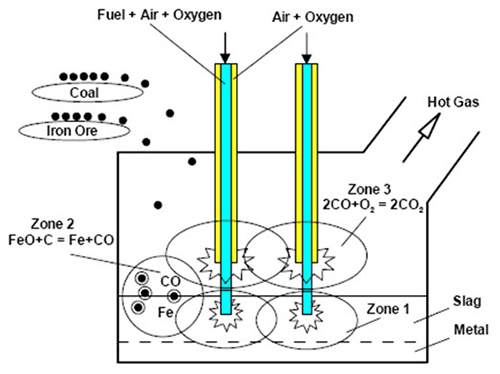
Figure 1: The three reaction zones of AusIron furnace
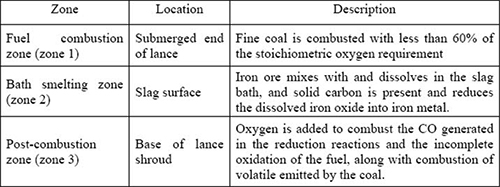
Table 1: Resultant operating zones of AusIron operation
Carbon monoxide produced by smelting reactions, together with reductant coal volatiles and residual fuel from lance tip combustion, is post-combusted immediately above the slag bath using oxygen-enriched air delivered through a shroud around each lance. The evolution of gases from the lance tip generates a cascade of slag droplets above the bath providing a large surface area for efficient recovery of post combustion energy. Complete combustion of fuel gases is achieved within the furnace maximizing energy recovery and avoiding the production of difficult low CV fuel gases.
Offgases leave the furnace through a boiler tube offtake that forms part of the energy recovery system. Hot metal product and slag are tapped separately from the furnace hearth. The furnace hearth is refractory lined in the metal bath region. The sidewalls and roof are water-cooled to withstand the intense operation and turbulent slag. The water-cooled furnace sections are slag coated during operation reducing heat losses and protecting cooling elements from damage.
Furnace operations can be stopped quickly, and the process idled for long periods by submerged combustion offuel coal only. For shutdown the furnace can be drained of its contents and the lance tip combustion used to maintain furnace temperature. Operations can be quickly reestablished by feeding solid slag, which is melted using the lances. Once a molten pool is established, the lances can be submerged, and operations resumed.
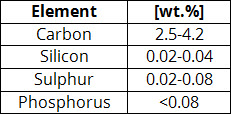
Table 2: Typical hot metal chemistry
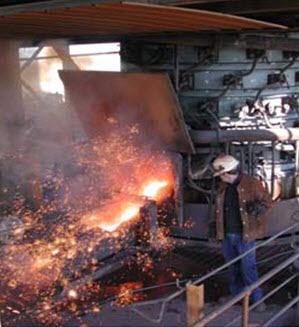
Figure 2: Tapping the AusIron Furnace
Advantages of AusIron process:
The key attributes of the technology are:
- Direct use of non-coking coals.
- Simple use of ferrous materials, no pelletising or sintering is required.
- High quality metal product suitable for both electric and oxygen steelmaking.
- Can use ferrous residues from minerals processing or steelplant waste products, as low cost feed to produce pig iron.
- An efficient, single stage process not reliant on preheating or pre-reduction of ore feeds.
- Product gases are fully combusted within the furnace, and can be directly fed to energy recovery equipment, simplifying offgas handling.
- The furnace operates at subatmospheric pressure allowing simple feeding and tapping arrangements. Lances can be raised clear of the furnace simplifying maintenance.
- Low environmental impact. The absence of coke ovens and sinter/pellet plants reduces environmental issues typically associated with ironmaking.
- Power Generation. A waste heat boiler system, directly coupled, can generate sufficient electrical power to supply the ironmaking facility and associated oxygen plant, with surplus power available for sale.
- Low capital. The use of a single stage, highly efficient smelter reduces capital requirements for new ironmaking capacity and permits effective use at smaller scales of operation than conventional processes.
- Operating flexibility. The lance based operations offer the ability to start, stop and idle the process easily.
Find Instantly Precise Compositions of Materials!
Total Materia Horizon contains chemical compositions of hundreds of thousands materials and substances, as well as their mechanical and physical properties and much more.
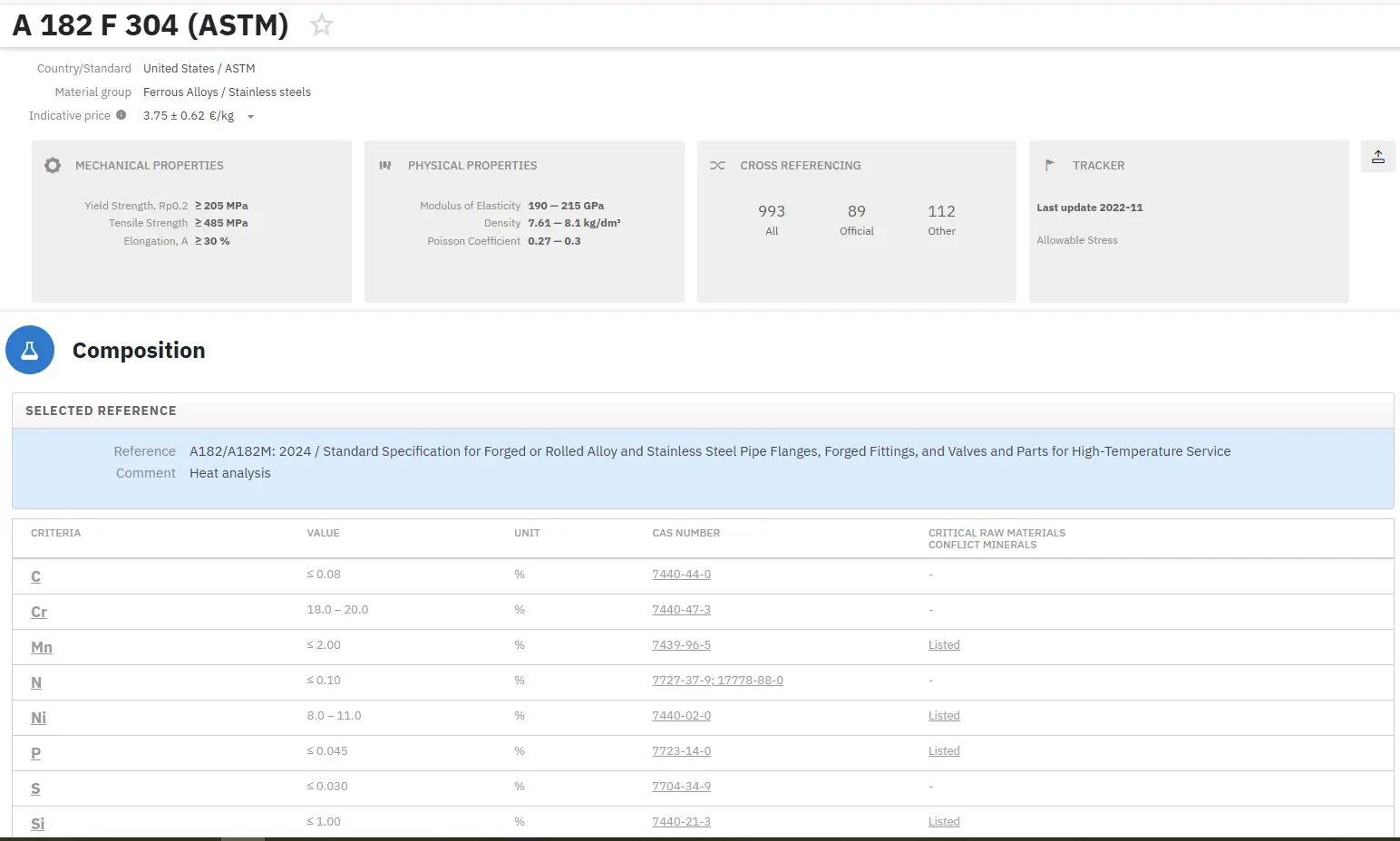
Get a FREE test account at Total Materia Horizon and join a community of over 500,000 users from more than 120 countries.